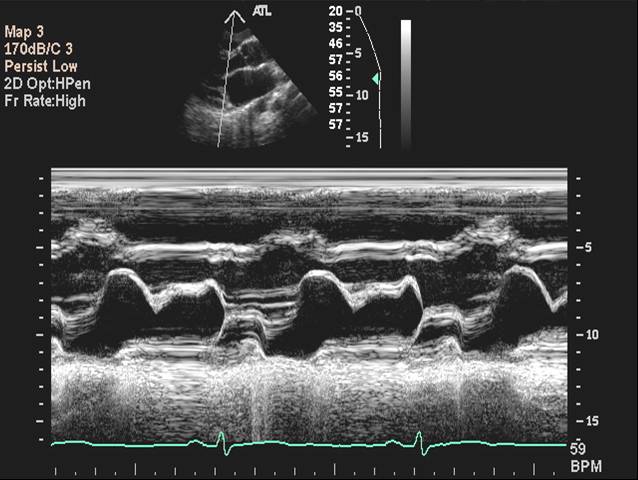Mitral valve prolapse echocardiography
|
Mitral valve prolapse Microchapters |
|
Diagnosis |
|---|
|
Treatment |
|
Mitral valve prolapse echocardiography On the Web |
|
American Roentgen Ray Society Images of Mitral valve prolapse echocardiography |
|
Risk calculators and risk factors for Mitral valve prolapse echocardiography |
Editor-In-Chief: C. Michael Gibson, M.S., M.D. [1]
Overview
Two- and three-dimensional echocardiography are valuable in the diagnosis of MVP as they allow visualization of the mitral leaflets relative to the mitral annulus. This allows measurement of the leaflet thickness and their displacement relative to the annulus. Thickening of the mitral leaflets >5 mm and leaflet displacement >2 mm indicates classic mitral valve prolapse.
Echocardiography
2D Echo features
The leaflets and chordae are thick and reduntant. Reduced tensile strength leads to progressive elongation or rupture of chordae. Ruptured chordae appear as flail segments.
To diagnose mitral valve prolapse, the following criteria should be fulfilled - Movement of any part of either leaflet more than 2mm behind the annular plane in parasternal long axis view and movement of point of co-aptation behind the annular plane in apical 4 chamber view. Mitral regurgitation can result in enlarged LA size.
Doppler
Colour flow mapping and CW doppler shows predominantly late systolic mitral regurgitation.
M Mode Echocardiography
 |